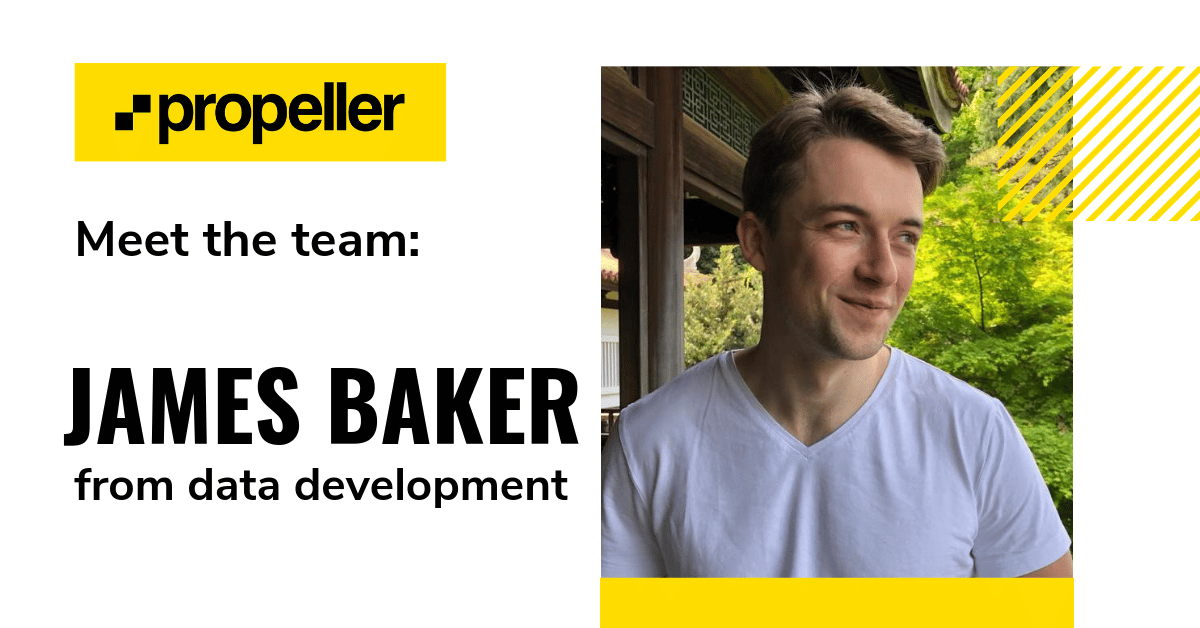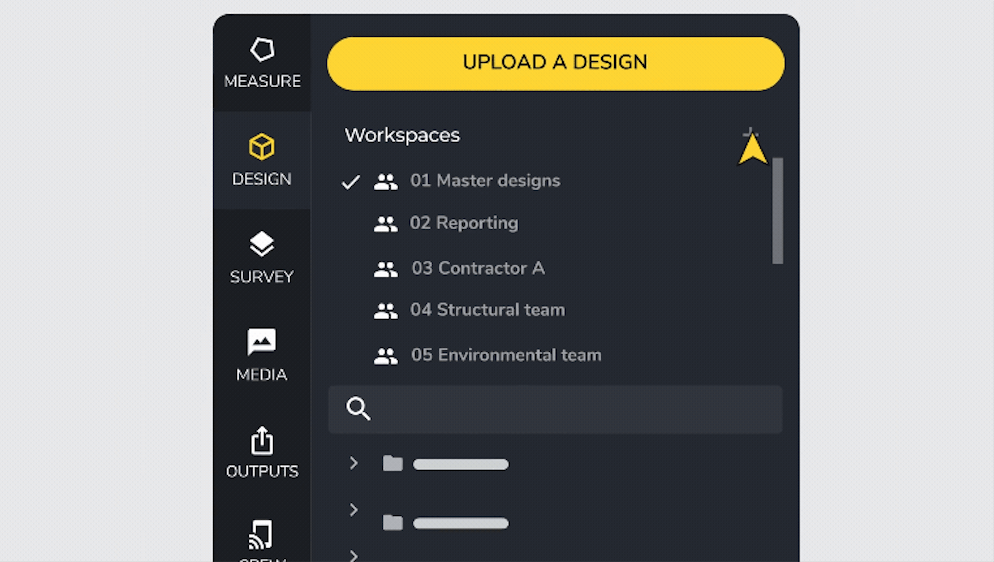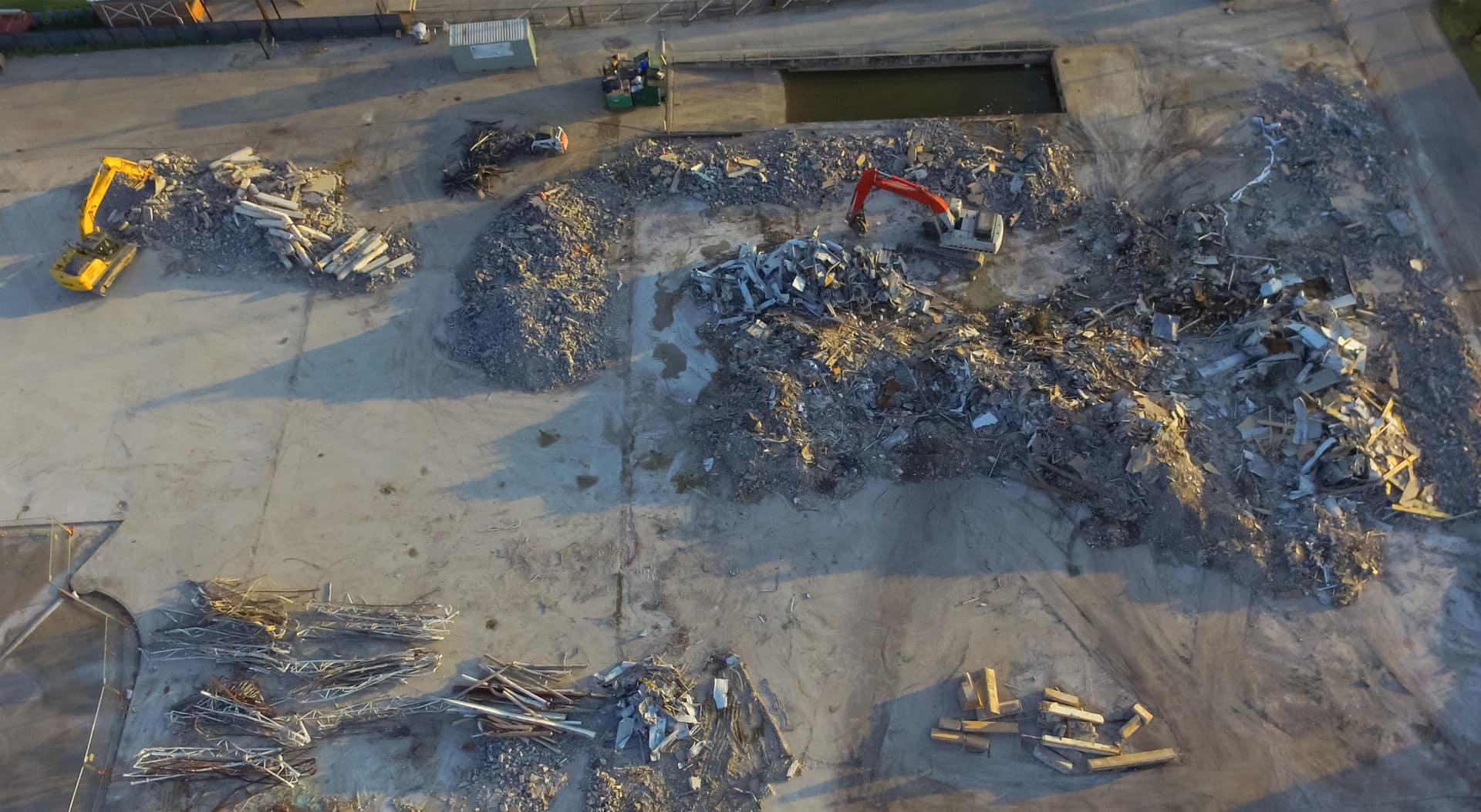Get to know Propeller’s world-class team in our ongoing employee spotlight. Today, we talk to James Baker, who serves as back-end engineer on the data development team. James is based in our Sydney, Australia, office.

What do you do at Propeller?
I started as a growth hacker and promptly did none of that. I moved to the fledgling data processing team, which at the time consisted solely of Tim, along with Per. We started on what is now known as Propeller‘s processing pipeline.
When you upload photos and have them converted into a 3D model, that’s using code that I wrote. If you have a look at the processing reports, that’s something I built. If you ever take a look at any of your outputs that you pull into AutoCAD, that’s something that I worked on along with a handful of wildly talented engineers in the data team.
That evolved into what I do now, as a back-end developer. For the past three years, I’ve been building out all the scripts and tools that automate Propeller’s processing so we can take in huge quantities of data and turn it into accurate 3D models at scale.
You’re one of the original members of the data team. What’s it been like to see the team grow? What are some of the best changes you’ve seen?
Having seen Propeller go from a scrappy team of nine people to a company of 80-plus over the course of so few years has been absolutely insane. It’s grown in a way that is almost impossible to imagine without actually experiencing it yourself.
What’s been really incredible has been watching how Propeller has had to continually reinvent itself. You’ve got a bunch of strategies and practices that work when you’re a team of 10. Those break when you reach a team of 20, and then you figure out what works with a team of 20, and so on. We grow and mature and things break, but we rebuild them better.
What’s your career background?
My career trajectory has been a weird one. I studied mechatronics at the University of Sydney. I’m pretty sure half the engineering team did it. It’s the famous jack-of-all-trades, master-of-none degree. Propeller needs software engineers, so that’s what I ended up focusing on.
But I had a crisis of conscience about halfway through my degree and thought, should I go into product marketing? So I did marketing at an agency called Traffik. It gave me a really good introduction to soft skills an engineer might not otherwise get exposed to
Where did you grow up?
I’m a Sydney-sider, through and through. I have, perhaps, a boring, vanilla sort of background. I haven’t come from abroad or traveled around a great many places during my early days. For the first 20 or so years of my life, I lived within two suburbs in eastern Sydney. That comes with a whole host of stereotypes, if you’re familiar with the area.
Before working at Propeller, what’s the strangest project you’ve worked on?
In that marketing job, I had one event for Nintendo’s Donkey Kong, down at Circular Quay, next to Sydney Harbor. Outside Customs House, we set up a giant projector screen and next to it there were four tons of bananas stacked on pallets in a giant pile. The idea was, no one knew what the bananas were for, but they were meant to drum up interest.
My job was to guard the banana stack. We had hordes of people coming up—very non-subtly, by the way—with duffle bags trying to sneak around the side of the pyramid. Once the event was unveiled, people could take bananas and we spent the rest of the time playing Donkey Kong on a giant inflatable screen the size of a movie cinema display.
What is the most memorable project you’ve worked on in your career?
My most memorable engineering experience was working on my undergraduate thesis. I had to reverse engineer a little Chinese quadcopter to get it to speak with some microcontroller hardware, then get that to listen to every other signal I could capture from the human body.
I taught the quad how to respond with gesture control. I set up all these sensors so a human could wire themselves up and fly the drone either using their brain or hand. The idea was to use natural modes of controlling things—more intuitive than picking up a controller and telling someone to deal with it.
Any talents, secret superpowers, or fun facts about yourself to share?
No superpowers, but I do have a certain knack for reckless engineering. On a whim, I took up woodworking because I wanted to make a model for a friend of mine. Ended up buying enough tools to fill up the attic to do it. I took up 3D printing because I wanted to make prototypes and enclosures for my electronics projects.
What’s your favorite Slack emoji and why?
While I’m fond of the Party Parrot emojis, my favorite has to be the Perifyed emoji we have, which is a picture of Per’s face.
When you’ve gone peak data team, that’s when you use that emoji. That’s the gold standard, the stamp of approval, the machinist’s badge. It’s interesting because it’s a symbol of praise for anyone in the data team and it’s a symbol of terror for anyone outside of it.
What’s one thing you wish people understood better about Propeller as a whole?
There’s really two things. For other engineers, I wish they knew the problems that we face are new and novel. You have more room to grow and explore here than potentially anywhere else.
Second, I wish our customers knew the huge amount of work, magic, and years of experience that go into making their data come out accurately—how much of that goes into every single dataset that we process.
With Propeller, you’re leveraging the years of experience that we have in seeing all the different ways things can go wrong and how we can fix them. Taking a massive dataset from unwieldy to accessible and keeping it accurate at the same time—all while turning it around quickly—is the trifecta of processing nirvana that all the data team strives for. The proof is in the pudding. The results that we provide are of a standard exceeded by none.



